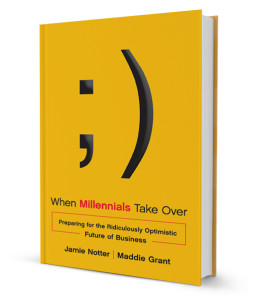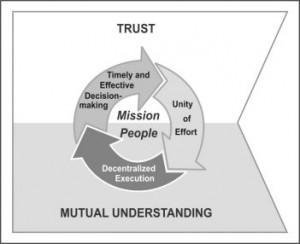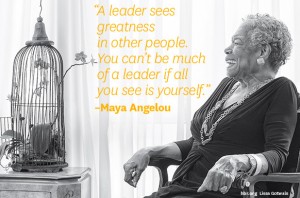Anna Caraveli (The Demand Networks) and I had the opportunity to guest moderate #assnchat on Tuesday, July 14, with discussion focused around the issues we raise in our new whitepaper, Leading Engagement from the Outside-In (download your free copy at http://bit.ly/1GPNUM6).
In case you missed it, here’s a recap of the high points of the conversation.
Q1 How do you currently learn about your audiences? How do you share that knowledge internally?
People up brought up a lot of the usual suspects: demographic data collection, emails, calls, surveys, focus groups, online profiles/subscriptions, and event evaluations.
Partners in Association Management had a great response:
@ewengel Our teams will share in their team meetings- if it’s cross industry, then we share our exp at a staff meeting #assnchat
— PartnersInAssocMgt (@Partners_AMC) July 14, 2015
Q2 How are you capturing and sharing learning from less formal interactions?
Brandon Robinson asked:
A2. Does jotting down notes on scraps of paper or back of biz cards count? The latter when at events. #assnchat
— Brandon Robinson CAE (@bkke) July 14, 2015
We all agreed that it did, and Lowell Apelbaum added:
a2. By informal sharing – each lesson I learn I try to relate in a narrative to at least three other people #assnchat — Lowell Aplebaum, CAE (@Lowellmatthew) July 14, 2015
Partners in Association Management also keeps something they call “back pocket lists”: good ideas that couldn’t be implemented at the time someone came up with them that they reserve for a more suitable time.
Q3 What do you know about the outcomes your audiences seek? How are you helping them achieve those outcomes?
This question launched some observations about different generations in the workforce and the association having different goals, with Karen Hansen also pointing out:
…also asked what we can do to help, & will discuss more at upcoming strategic planning. Lots of #journalism industry change now #assnchat
— Karen Hansen (@hansenkarenm) July 14, 2015
We also talked about the whole “what keeps you up at night?” question (which is one of Anna’s favorites), and Lowell Apelbaum observed:
@rockettm I think if you ask what keep up @ night, also have to ask what gets them out of bed in the am – tap into positive too #assnchat
— Lowell Aplebaum, CAE (@Lowellmatthew) July 14, 2015
Q4 How do you discover what your audiences really value? How do you use that information?
People had lots of good suggestions here, ranging from pilot programs to trial and error, asking them, tracking behavior, observing what they spread/share/talk about/promote, and Ewald Consulting went kind of Zen Master on us:
A4. #assnchat Listen with your mind, not only your ears and act on what member are telling you pic.twitter.com/Rn2zuHSsqc
— Ewald Consulting (@EwaldConsulting) July 14, 2015
That’s deep, man.
Q5 How do you facilitate building authentic relationships w your audiences? Between members?
Lots of great chatter here, too, but Karen Hansen had a simple, powerful response:
A5) I try to talk to them like a real human being, minimize cut-and-paste responses when I can. #assnchat — Karen Hansen (@hansenkarenm) July 14, 2015
Treat members like human beings?!?! Radical concept!
Q6 How do you develop new products/programs/services? How do you collaborate with members on this?
Lowell (who was really on a roll today) had another great response for this one:
a6. new programs/products should have the member voice in the idea, insight in the substance, and experience/input in the pilot #assnchat
— Lowell Aplebaum, CAE (@Lowellmatthew) July 14, 2015
When we got to question 7, we kind of heard crickets:
Q7 How do you encourage collaboration between audiences and association? Among members?
Opinion was pretty much universal that this is a big struggle for associations. Kait Solomon pointed out:
A7) I think this will be the new standard for why you join for “networking.” The Assc that figures this out will stay relevant #assnchat — Kait Solomon (@KaitlinSolomon3) July 14, 2015
Q8 How do you currently define engagement? Is your definition adequate/satisfactory?
Where Kait also observed that “engagement” has become a buzzword, and I quoted Ed Bennett, who recently pointed out that if there’s no ring involved, we probably need to stop talking about engagement and focus on what we really mean: conversation, talking, listening, relationship.
Q9 What do you do with members once you engage them? What’s the next step/goal?
I’m going back to Lowell again:
a9. Engagement is a journey – should have many paths to pursue – ? is how assn can best be the map/guide/sherpa #assnchat
— Lowell Aplebaum, CAE (@Lowellmatthew) July 14, 2015
Our final question, which is the challenge I’m going to leave you with, too was:
Q10 What is one action you could take today to start your association on the path to outside-in engagement?
Not sure how to answer that? Check out the whitepaper at http://bit.ly/1GPNUM6 to get some ideas!



